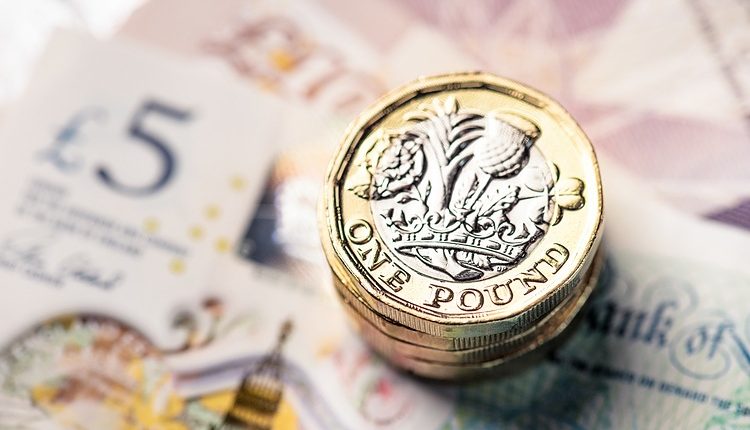- The Pound Sterling faces a sharp sell-off as rising borrowing costs for the UK government could force the administration to cut public spending.
- Surprisingly upbeat US NFP data has forced traders to pare dovish Fed bets.
- Investors await the UK-US inflation data for December, which will be released on Wednesday.
The Pound Sterling (GBP) extends its losing streak against its major peers at the start of the week. The British currency continues to face selling pressure as soaring yields on United Kingdom (UK) 30-year gilts deepen concerns over the nation’s economic outlook.
30-year UK gilt yields roar to near 5.47%, the highest level since 1998. Market experts view the surge in gilt yields as partly driven by the uncertainty over incoming trade policies by United States (US) President-elect Donald Trump, who is set to enter the White House on January 20, and the UK’s heavy reliance on foreign financing to address their funds’ demand for domestic spending.
“The more a country relies on foreign financing for its domestic debt issuance, the more exposed it is to the global environment,” Deutsche Bank said and added that from the perspective of external flows, the UK is one of the “most vulnerable in the G10″.
Soaring UK government’s borrowing costs have jeopardized Chancellor of the Exchequer Rachel Reeves’s decision to fund day-to-day spending through tax receipts and cut public spending. However, UK Treasury Minister Darren Jones clarified at the House of Commons on Thursday that the government’s decision to only borrow for investment was “non-negotiable”.
Going forward, the next trigger for the Pound Sterling will be the UK Consumer Price Index (CPI) data for December, which will be released on Wednesday. The consumer inflation data will significantly influence market speculation about the Bank of England’s (BoE) monetary policy outlook. Currently, UK rate futures show that traders pare BoE dovish bets and see a 44 basis points (bps) interest rate reduction this year against the 50 bps recorded last week.
British Pound PRICE Today
The table below shows the percentage change of British Pound (GBP) against listed major currencies today. British Pound was the strongest against the Euro.
| USD | EUR | GBP | JPY | CAD | AUD | NZD | CHF | |
|---|---|---|---|---|---|---|---|---|
| USD | 0.45% | 0.69% | -0.38% | 0.05% | 0.00% | 0.22% | -0.07% | |
| EUR | -0.45% | 0.23% | -0.75% | -0.33% | -0.30% | -0.17% | -0.43% | |
| GBP | -0.69% | -0.23% | -0.97% | -0.54% | -0.53% | -0.40% | -0.66% | |
| JPY | 0.38% | 0.75% | 0.97% | 0.42% | 0.31% | 0.46% | 0.31% | |
| CAD | -0.05% | 0.33% | 0.54% | -0.42% | -0.09% | 0.16% | -0.04% | |
| AUD | -0.00% | 0.30% | 0.53% | -0.31% | 0.09% | 0.10% | -0.13% | |
| NZD | -0.22% | 0.17% | 0.40% | -0.46% | -0.16% | -0.10% | -0.26% | |
| CHF | 0.07% | 0.43% | 0.66% | -0.31% | 0.04% | 0.13% | 0.26% |
The heat map shows percentage changes of major currencies against each other. The base currency is picked from the left column, while the quote currency is picked from the top row. For example, if you pick the British Pound from the left column and move along the horizontal line to the US Dollar, the percentage change displayed in the box will represent GBP (base)/USD (quote).
Daily digest market movers: Pound Sterling underperforms US Dollar with UK-US inflation in focus
- The Pound Sterling posts a fresh yearly low to near 1.2120 against the US Dollar (USD) on Monday. The GBP/USD pair weakens as the US Dollar strengthens as traders pare Federal Reserve (Fed) dovish bets this year after the release of the surprisingly robust US Nonfarm Payrolls (NFP) data for December.
- The US Dollar Index (DXY), which gauges the Greenback’s value against six major currencies, moves higher to a more-than-two-year high above 110.00. The US NFP report showed that labor demand remained strong and the Unemployment Rate decelerated, easing fears of a slowdown in the job market, which forced Fed policymakers to pivot to a policy-easing cycle with a larger-than-usual pace of 50 basis points (bps) in September.
- Analysts at Macquarie expect the Fed to cut borrowing rates only once this year, with the current interest rate cycle bottoming in the range of 4.00%-4.25%.
- This week, investors will focus on the US Producer Price Index (PPI) and Consumer Price Index (CPI) data for December, which will be published on Tuesday and Wednesday, respectively. Signs of stubborn inflation data would further weigh on the Fed’s dovish bets.
Technical Analysis: Pound Sterling sees more downside as 20-day EMA slops downwards
The Pound Sterling refreshes its more-than-a-year low to near 1.2120 against the US Dollar in Monday’s European session. The selling pressure in the GBP/USD pair was triggered after the pair broke below the January 2 low of 1.2350.
Vertically declining 20-day Exponential Moving Average (EMA) near 1.2450 suggests that the near-term trend is extremely bearish.
The 14-day Relative Strength Index (RSI) slides to nearly 26.70, the lowest since October 2023. This scenario suggests a strong bearish momentum. However, a slight recovery cannot be ruled out as the momentum oscillator is in oversold territory.
Looking down, the pair is expected to find support near the October 2023 low of 1.2050. On the upside, the 20-day EMA will act as key resistance.
Read the full article here

